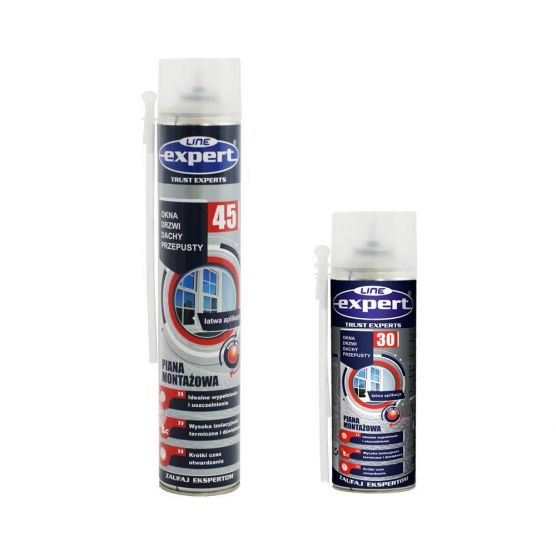EXPERT LINE Straw Foam Winter
› fitting doors and windows;
› thermal insulation of water, sewage and central heating systems;
› sealing and installation of window sills;
› thermal insulation of flat roofs and ceilings;
› filling gaps (up to 2 cm wide) in thermal insulation when insulating buildings.
› Has excellent stability (no shrinkage).
› Cures by moisture in the air.
› Shows excellent thermal insulation and sound-proof parameters.
› Resistant to mould and fungi.
Colour Light yellow
Working temperature from -10°C to +30°C
Can temperature from +10°C to +30°C (optimally +20°C)
Foam yield up to 45 l
Skin formation time 6-12 min. (20°C, RH 90%)
Cutting time 45±10% [min.]
Full hardening time 24 h
Increase in height (expansion degree) of the foam applied in the gap), % 136±10%
Thermal resistance (upon hardening) from -50°C to +90°C
Thermal conductivity λ 0,036 W/(m·K)
Water absorbability after 24 hours in water when partially immersed ≤1 kg/m2
Inflammability B3 (DIN 4102)
Solubility in organic solvents acetone, before hardening
Substrate preparation:
Thoroughly clean and degrease the substrate. Remove hoarfrost in the winter season. Before application, moisten the surface with water mist to ensure better adhesion.
Product preparation:
Before use, warm the can with foam to room temperature (optimally +20°C) by, for example, immersing the can in warm water. Shake the can vigorously for 30 seconds to thoroughly mix the ingredients. Screw the straw applicator onto the can.
Foam application:
Dispense product in the upside-down working position. Fill the gap to 50% of its depth, in layers of 4 cm per layer. Moisten the surface between each layer to improve good adhesion and speed up curing. Fill vertical gaps from bottom to top. Once fully cured use a knife to cut off any excess foam. When the foam has fully cured, it should be protected from UV radiation by covering it with silicon masses, plasters, paints etc.
Logistics
| 750 ml | Aerosol |


